The Role of Community-led Governance in Innovation Diffusion: The Case of RFID Waste Pricing System in the Republic of Korea
Abstract
1. Introduction
2. Literature Review
2.1. Research Background
2.2. Determinants of Innovation Adoption
2.2.1. Technology Factors
2.2.2. Organization Factors: Community Governance
2.2.3. Environment Factors: Government Campaign as External Gravity
2.2.4. Limitations of Previous Studies
3. Research Design
3.1. Research Process
3.2. Data Collection
3.3. Analytical Frame
3.4. Variable Measurement
4. Empirical Analysis
4.1. Descriptive Statistics
4.1.1. Dependent variable
4.1.2. Independent variables
4.2. Empirical Analysis
5. Discussion and Conclusions
Author Contributions
Funding
Acknowledgments
Conflicts of Interest
Appendix A. RFID Adoption by Date
| Adoption date | Frequency | Percent |
| 1 January 2013 | 18 | 3.46 |
| 1 April 2013 | 87 | 16.73 |
| 1 June 2013 | 122 | 23.46 |
| 1 July 2013 | 13 | 2.5 |
| 1 January 2014 | 1 | 0.19 |
| 1 April 2014 | 5 | 0.96 |
| 1 May 2014 | 22 | 4.23 |
| 1 July 2014 | 18 | 3.46 |
| 1 September 2014 | 4 | 0.77 |
| 1 November 2014 | 25 | 4.81 |
| 1 December 2014 | 13 | 2.5 |
| 1 January 2015 | 4 | 0.77 |
| 1 February 2015 | 3 | 0.58 |
| 1 March 2015 | 32 | 6.15 |
| 1 April 2015 | 29 | 5.58 |
| 1 May 2015 | 20 | 3.85 |
| 1 June 2015 | 12 | 2.31 |
| 1 July 2015 | 35 | 6.73 |
| 1 August 2015 | 9 | 1.73 |
| 1 September 2015 | 36 | 6.92 |
| 1 October 2015 | 12 | 2.31 |
Appendix B. List of Interviewees
| Identification | Age | Gender | Occupation | Apartment Complex |
| 1 | 55 | Female | Head of management office | Jinheung |
| 2 | 58 | Male | Head of management office | Hyundai 1 |
| 3 | 34 | Female | Staff of management office | Kyungnam |
| 4 | 65 | Male | Head of management office | Hyosung |
| 5 | 46 | Female | Resident | Woosung 1 |
| 6 | 72 | Female | Resident | Hyundai 2 |
| 7 | 54 | Female | Resident | Woosung 6 |
| 8 | 45 | Male | Government official in Waste and Cleaning department of Gangnam | - |
| 9 | 59 | Male | Head of management office | Nature Hill 1 |
| 10 | 68 | Male | Head of management office | Nature Hill 2 |
| 11 | 32 | Female | Staff of management office | Nature Hill 3 |
| 12 | 38 | Female | Resident | Nature Hill 4 |
| 13 | 62 | Male | Resident | Star Hill |
| 14 | 64 | Female | Resident | Star Hill |
| 15 | 38 | Male | Government official in Waste and Cleaning Department of Seocho | - |
| 16 | 35 | Male | Government official in Waste and Cleaning Department of Youngdeungpo | - |
| 17 | 31 | Male | Government official in Waste and Cleaning Department of Jongro | - |
| 18 | 28 | Female | Government official in Waste and Cleaning Department of Songpa | - |
References and Notes
- Choi, J.H.; Chang, D.K. Prevention of progressive collapse for building structures to member disappearance by accidental actions. J. Loss Prev. Process Indust. 2009, 22, 1016–1019. [Google Scholar] [CrossRef]
- Park, K.O. Establishment of the social environment to active communities in apartment housing. J. Kor. Hous. Assoc. 2010, 21, 141–150. [Google Scholar] [CrossRef]
- Tornatzky, L.G.; Klein, K.J. Innovation characteristics and innovation adoption-implementation: A meta-analysis of findings. IEEE Trans. Eng. Manag. 1982, 1, 28–45. [Google Scholar] [CrossRef]
- Morgan, G. Creative Organization Theory: A Resource Book; Sage: Newbury Park, UK, 1989. [Google Scholar]
- Dunleavy, P. Is there a radical approach to public administration? Publ. Admin. 1982, 60, 215–225. [Google Scholar] [CrossRef]
- Kim, K.H.; Shin, S.J.; Choi, S.Y.; Yeo, J.H.; Kang, K.S. A study on economical introduction of RFID system in the small and medium 3rd party logistics. J. Kor. Saf. Manag. Sci. 2008, 10, 117–126. [Google Scholar]
- Billings, R.S.; Wroten, S.P. Use of path analysis in industrial/organizational psychology: Criticisms and suggestions. J. Appl. Psychol. 1978, 63, 677–688. [Google Scholar] [CrossRef]
- KOSIS (Korean Statistical Information Service). Available online: http://kostat.go.kr/portal/korea/index.action (accessed on 18 July 2018).
- Homepage Title. Available online: https://www.keco.or.kr/en/core/waste_rfid/contentsid/1984/index.do (accessed on 18 July 2018).
- Fenn, J.; Raskino, M. Mastering the Hype Cycle: How to Choose the Right Innovation at the Right Time; Harvard Business Press: Boston, MA, USA, 2008. [Google Scholar]
- Konsynski, B.; Smith, H.A. Developments in practice x: Radio frequency identification (RFID)-an internet for physical objects. Comm. Assoc. Inform. Syst. 2003, 12, 301–311. [Google Scholar]
- Lai, H.M.; Lin, I.C.; Tseng, L.T. High-level managers’ considerations for RFID adoption in hospitals: An empirical study in Taiwan. J. Med. Syst. 2014, 38, 1–17. [Google Scholar] [CrossRef] [PubMed]
- Mehrjerdi, Y. RFID-enabled healthcare systems: Risk-benefit analysis. Int. J. Pharmaceut. Healthc. Market. 2010, 4, 282–300. [Google Scholar] [CrossRef]
- Schultz, R.L.; Slevin, D.P. Implementation and management innovation. In Implementing Operations Research and Management Science; Elsevier: New York, NY, USA, 1975; pp. 3–20. [Google Scholar]
- Lai, M.L.; Choong, K.F. Motivators, barriers and concerns in adoption of electronic filing system: Survey evidence from Malaysian professional accountants. Am. J. Appl. Sci. 2010, 7, 562–567. [Google Scholar] [CrossRef]
- Brown, I.; Russell, J. Radio frequency identification technology: An exploratory study on adoption in the South African retail sector. Int. J. Inform. Manag. 2007, 27, 250–265. [Google Scholar] [CrossRef]
- Moore, G.A. Crossing the Chasm (Revised Ed.); Harper Business: New York, NY, USA, 1991. [Google Scholar]
- Bradford, M.; Florin, J. Examining the role of innovation diffusion factors on the implementation success of enterprise resource planning systems. Int. J. Account. Inform. Syst. 2003, 4, 205–225. [Google Scholar] [CrossRef]
- Wen, L.; Zailani, S.; Fernando, Y. Determinants of RFID adoption in supply chain among manufacturing companies in China: A discriminant analysis. Int. J. Tech. Manag. Innovat. 2009, 4, 22–32. [Google Scholar] [CrossRef]
- Grover, V.; Goslar, M.D. The initiation, adoption, and implementation of telecommunications technologies in US organizations. J. Manag. Inform. Syst. 1993, 10, 141–164. [Google Scholar] [CrossRef]
- Mintzberg, H. The Structuring of Organizations: A Synthesis of the Research. University of Illinois at Urbana-Champaign’s Academy for Entrepreneurial Leadership Historical Research Reference in Entrepreneurship. 1979. Available online: https://ssrn.com/abstract=1496182 (accessed on 1 September 2018).
- Kinsella, B. The Wal-mart factor. Ind. Eng. 2003, 35, 32–37. [Google Scholar]
- Steensma, H.K. Acquiring technological competencies through inter-organizational collaboration: An organizational learning perspective. J. Eng. Tech. Manag. 1996, 12, 267–286. [Google Scholar] [CrossRef]
- Poston, R.; Grabski, S. Financial impacts of enterprise resource planning implementations. Int. J. Account. Inform. Syst. 2001, 2, 271–294. [Google Scholar] [CrossRef]
- Zhu, K.; Kraemer, K.L.; Xu, S. The process of innovation assimilation by firms in different countries: A technology diffusion perspective on e-business. Manag. Sci. 2006, 52, 1557–1576. [Google Scholar] [CrossRef]
- Thompson, D. James Madison on Cyber-democracy. In Democracy.com: Governance in a Networked World; Elaine, K., Joseph, N., Eds.; Hollis Publishing Company: Hollis, NH, USA, 1999; pp. 35–42. [Google Scholar]
- Min, H.; Park, J.; Kim, H.J. Common method bias in hospitality research: A critical review of literature and an empirical study. Int. J. Hospit. Manag. 2016, 56, 126–135. [Google Scholar] [CrossRef]
- Kim, S. Determinants impacting the adoption and implementation of RFID technology and the moderating effect of organizational readiness. J. Inform. Syst. 2010, 19, 149–177. [Google Scholar] [CrossRef]
- Lin, C.Y.; Ho, Y.H. RFID technology adoption and supply chain performance: An empirical study in China’s logistics industry. Int. J. Supply Chain Manag. 2009, 14, 369–378. [Google Scholar] [CrossRef]
- Ramanathan, R.; Ramanathan, U.; Ko, L.W.L. Adoption of RFID technologies in UK logistics: Moderating roles of size, barcode experience and government support. Expert Syst. Appl. 2014, 41, 230–236. [Google Scholar] [CrossRef]
- Grandon, E.E.; Pearson, J.M. Electronic commerce adoption: An empirical study of small and medium US businesses. Inform. Manag. 2004, 42, 197–216. [Google Scholar] [CrossRef]
- Venkatesh, V.; Davis, F.D. A theoretical extension of the technology acceptance model: Four longitudinal field studies. Manag. Sci. 2000, 46, 186–204. [Google Scholar] [CrossRef]
- Wymer, S.A.; Regan, E.A. Factors influencing e-commerce adoption and use by small and medium businesses. Electron. Market 2005, 15, 438–453. [Google Scholar] [CrossRef]
- Iacovou, C.L.; Benbasat, I.; Dexter, A.S. Electronic data interchange and small organizations: Adoption and impact of technology. MIS Q. 1995, 19, 465–485. [Google Scholar] [CrossRef]
- Caldeira, M.M.; Ward, J.M. Understanding the successful adoption and use of IS/IT in SMEs: An explanation from Portuguese manufacturing industries. Inform. Syst. J. 2002, 12, 121–152. [Google Scholar] [CrossRef]
- Lee, J.B.; Lee, S.C.; Lee, H.S.; Lee, H.C. An analysis of environmental factor and organization factors in RFID adoption: Based on moderating effect of firms. J. Inform. Syst. 2006, 15, 213–236. [Google Scholar]
- Dosi, G. The research on innovation diffusion: An assessment. In Diffusion of Technologies and Social Behavior; Springer: Berlin, Germany, 1991; pp. 179–208. [Google Scholar]
- Xu, S.; Zhu, K.; Gibbs, J. Global technology, local adoption: A Cross-Country investigation of internet adoption by companies in the united states and china. Electron. Market. 2004, 14, 13–24. [Google Scholar] [CrossRef]
- Lee, M.S. An empirical study on the effect of trust and RFID technology acceptance. Kor. J. Bus. Admin. 2008, 16, 47–81. [Google Scholar]
- McKnight, D.H.; Choudhury, V.; Kacmar, C. Developing and validating trust measures for e-commerce: An integrative typology. Inform. Syst. Res. 2002, 13, 334–359. [Google Scholar] [CrossRef]
- Gefen, D.; Karahanna, E.; Straub, D.W. Trust and TAM in online shopping: An integrated model. MIS Q. 2003, 27, 51–90. [Google Scholar] [CrossRef]
- Rogers, E.M. Diffusion of Innovations (5th Edition); Simon and Schuster: New York, NY, USA, 2003. [Google Scholar]
- Davis, F.D. A technology acceptance model for empirically testing new end-user information systems: Theory and results. Ph.D. Dissertation, Massachusetts Institute of Technology, MA, USA, 1985. [Google Scholar]
- Sears, G.J.; Baba, V.V. Toward a multistage, multilevel theory of innovation. Can. J. Admin. Sci. 2011, 28, 357–372. [Google Scholar] [CrossRef]
- Jun, S.P. A comparative study of hype cycles among actors within the socio-technical system: With a focus on the case study of hybrid cars. Technol. Forecast. Soc. Change. 2012, 79, 1413–1430. [Google Scholar] [CrossRef]
- Jarvenpaa, H.; Makinen, S.J. Empirically detecting the Hype Cycle with the life cycle indicators: An exploratory analysis of three technologies. In Proceedings of the 008 IEEE International Conference on Industrial Engineering and Engineering Management, Snigapore, 8–11 December 2008; pp. 12–16. [Google Scholar]
- Steinert, M.; Leifer, L. Scrutinizing Gartner’s hype cycle approach. In Proceedings of the Technology Management for Global Economic Growth (PICMET); IEEE: Piscataway, NJ, USA, 2010; pp. 1–13. [Google Scholar]
- Ruef, A.; Markard, J. What happens after a hype? How changing expectations affected innovation activities in the case of stationary fuel cells. Tech. Anal. Strat. Manag. 2010, 22, 317–338. [Google Scholar] [CrossRef]
- McPherson, M.S.; Bacow, L.S. Online higher education: Beyond the hype cycle. J. Econ. Perspect. 2015, 29, 135–154. [Google Scholar] [CrossRef]
- Van Lente, H.; Spitters, C.; Peine, A. Comparing technological hype cycles: Towards a theory. Technol. Forecast. Soc. Change. 2013, 80, 1615–1628. [Google Scholar] [CrossRef]
- Van Lente, H.; Bakker, S. Competing expectations: The case of hydrogen storage technologies. Tech. Anal. Strat. Manag. 2010, 22, 693–709. [Google Scholar] [CrossRef]
- The Korean Government has been legally required to release governmental data to the public through its website, https://www.open.go.kr/ since 1996 ([53]). The main sources of public information and data are central and local governments, particularly local government, as it is less likely to deal with issues related to national security and defense [54]. The government can refuse to release information that might compromise national security.
- Lee, S.; Jung, K. A meta-analysis of determinants of RFID adoption around the world: Organization, technology, and public policy. Asia Pac. J. Innovat. Enterpren. 2016, 10, 67–90. [Google Scholar] [CrossRef]
- Jung, K.; Lee, S. A systematic review of RFID applications and diffusion: key areas and public policy issues. J. Open Innovat.: Tech. Market Complex. 2015, 1, 9. [Google Scholar] [CrossRef]
- Zailani, S.; Govindan, K.; Iranmanesh, M.; Shaharudin, M.R.; Chong, Y.S. Green innovation adoption in automotive supply chain: The Malaysian case. J. Cleaner Prod. 2015, 108, 1115–1122. [Google Scholar] [CrossRef]
- Tsai, W.C.; Tang, L.L. A model of the adoption of radio frequency identification technology: The case of logistics service firms. J. Eng. Tech. Manag. 2012, 29, 131–151. [Google Scholar] [CrossRef]
- “There is almost no cost for people to buy the RFID machine. In fact, this is a project to be carried out by the Ministry of Environment, so the central government invests and supports in many cases purchasing the machine… They wanted to go fast more than anything.” (Seoul Metropolitan City Government Officer). “The people who live in the apartment complex…do not have to pay for the machine. But instead the RFID method has a higher waste charge than the former system.” (Gu Government Officer)
- Wang, Y.B.; Lin, K.Y.; Chang, L.; Hung, J.C. A diffusion of innovations approach to investigate the RFID adoption in Taiwan logistics industry. J. Comput. 2011, 6, 441–448. [Google Scholar] [CrossRef]
- “Yes indeed. Residents who used individual heating were more interested in that (RFID) method. It’s familiar, isn’t it? They are accustomed to this… They want to continue the way they did.” (head of apartment complex management office)
- “Well...there is possibility that the machine breaks down in the middle, and also that the residents do not know how to use it at first….They can lose their RFID card as well. If you lose it, the manager who works in the apartment complex management office will pick up the master card key and open the machine…because every resident wants to throw food waste away faster…you know the smell…so you can see that you can only adopt the RFID system in a large apartment complex where there are many households and managers… It’s natural.”
- “The rich people do not care much about the method of throwing away waste. Good is good….The Gu government asked us to adopt a new system because it’s good. You know, this district is one of the wealthiest districts in Seoul. We do not care about the cost, actually. We are willing to follow the Gu government’s rule as long as it is convenient and efficient enough.”
- “When the Gu government suggests that people implement the new system, it is the residents who decide whether to adopt it or not, not the local government… So the Gu government held public hearings to persuade people and we sent a representative. Our apartment complex has its own management committee, so we meet often. So it was easy to decide who to send to the public hearing or whether to adopt the RFID method or something….There is a person and it is easy to have conversations with each other in our apartment. We kept gathering.”
- Asif, Z. Integrating the supply chain with RFID: A technical and business analysis. Comm. Assoc. Inform. Syst. 2005, 15, 24. [Google Scholar]
- “We manage the system. The managers can use RFID cards to help the residents throw food waste away whenever they lose the card…and we clean the site. Without us, no one can realistically manage and operate the RFID system… Who will fix all the problems immediately?”. “Without the managers from the management office, we cannot manage. When we first tried to adopt the RFID system, we also advertised that we would prefer an apartment complex with a large management office and a sufficient number of management personnel.
- “We held a public hearing so that we could explain the effectiveness and efficiency of this new system. Also, we usually update the documents about public hearings and other materials that relate to the RFID system on our webpage… Everyone knows how to search for information on the internet and they check the information through the internet… so we upload the files.”. “Homepage? We upload a lot of things….We usually upload our promotional materials and other public hearing materials… I also upload what local residents need often…if our district’s case or information about RFID come up as a press article, it will be uploaded as a link.”
- Kleinbaum, D.G.; Klein, M. Evaluating the proportional hazards assumption. In Survival Analysis; Springer: New York, NY, USA, 2012; pp. 161–200. [Google Scholar]
- For instance, let’s look at a case of Cheunggu apartment complex and Hyundai apartment complex in the jurisdiction of Yeongdeungpo-Gu in Seoul City. Both of these apartment complexes were constructed in the 1990s, and the number of householders in these two complexes are similar to two hundred ones. There is, however, an apartment self-governing committee at the Cheunggu aparment complex, but not at the Hyundai apartment complex. In June 2013, the Cheunggu apartment complex adopted the RFID based food waste method. On the other hand, the Hyundai apartment complex have not the RFID method since the 2013 policy reform of food waste management. The self-governing committee contributed to adopting the RFID system as an early adopter through its connecting role to facilitate engagement and deliberation at community agenda. As of 2016, 80% of the apartment complexes in Yeongdeungpo-Gu area that do not adopt RFID system have no self-government committee. Apartment complexes with the self-governing committee are likely to adopt the RFID food waste disposal method.
- “You know… the waste charge is not that expensive… It is about the same as a kid’s snacks and a cookie. Nobody cares about such a cheap price.” (apartment complex management office manager)
- Kim, J.Y.; Choi, D.S.; Sung, C.S.; Park, J.Y. The role of problem solving ability on innovative behavior and opportunity recognition in university students. J. Open Innovat. Tech. Market Complex. 2018, 4, 4. [Google Scholar] [CrossRef]
- Egbetokun, A.; Oluwadare, A.J.; Ajao, B.F.; Jegede, O.O. Innovation systems research: An agenda for developing countries. J. Open Innovat. Tech. Market Complex. 2017, 3, 25. [Google Scholar] [CrossRef]
- Park, E.; Lee, J.W. A study on policy literacy and public attitudes toward government innovation focusing on Government 3.0 in South Korea. J. Open Innovat. Tech. Market Complex. 2015, 1, 23. [Google Scholar] [CrossRef]
- Trindade, E.P.; Hinnig, M.P.F.; da Costa, E.M.; Marques, J.S.; Bastos, R.C.; Yigitcanlar, T. Sustainable development of smart cities: A systematic review of the literature. J. Open Innovat. Tech. Market Complex. 2017, 3, 11. [Google Scholar] [CrossRef]
- Lee, M.; Yun, J.J.; Pyka, A.; Won, D.; Kodama, F.; Schiuma, G.; Yan, M.R. How to respond to the fourth industrial revolution, or the second information technology revolution? Dynamic new combinations between technology, market, and society through open innovation. J. Open Innovat. Tech. Market Complex. 2018, 4, 21. [Google Scholar] [CrossRef]
- Kim, P.H.; Wennberg, K.; Croidieu, G. Untapped riches of meso-level applications in multilevel entrepreneurship mechanisms. Acad. Manag. Perspect. 2016, 30, 273–291. [Google Scholar] [CrossRef]
- Jepperson, R.; Meyer, J.W. Multiple levels of analysis and the limitations of methodological individualisms. Socio. Theor. 2011, 29, 54–73. [Google Scholar] [CrossRef]
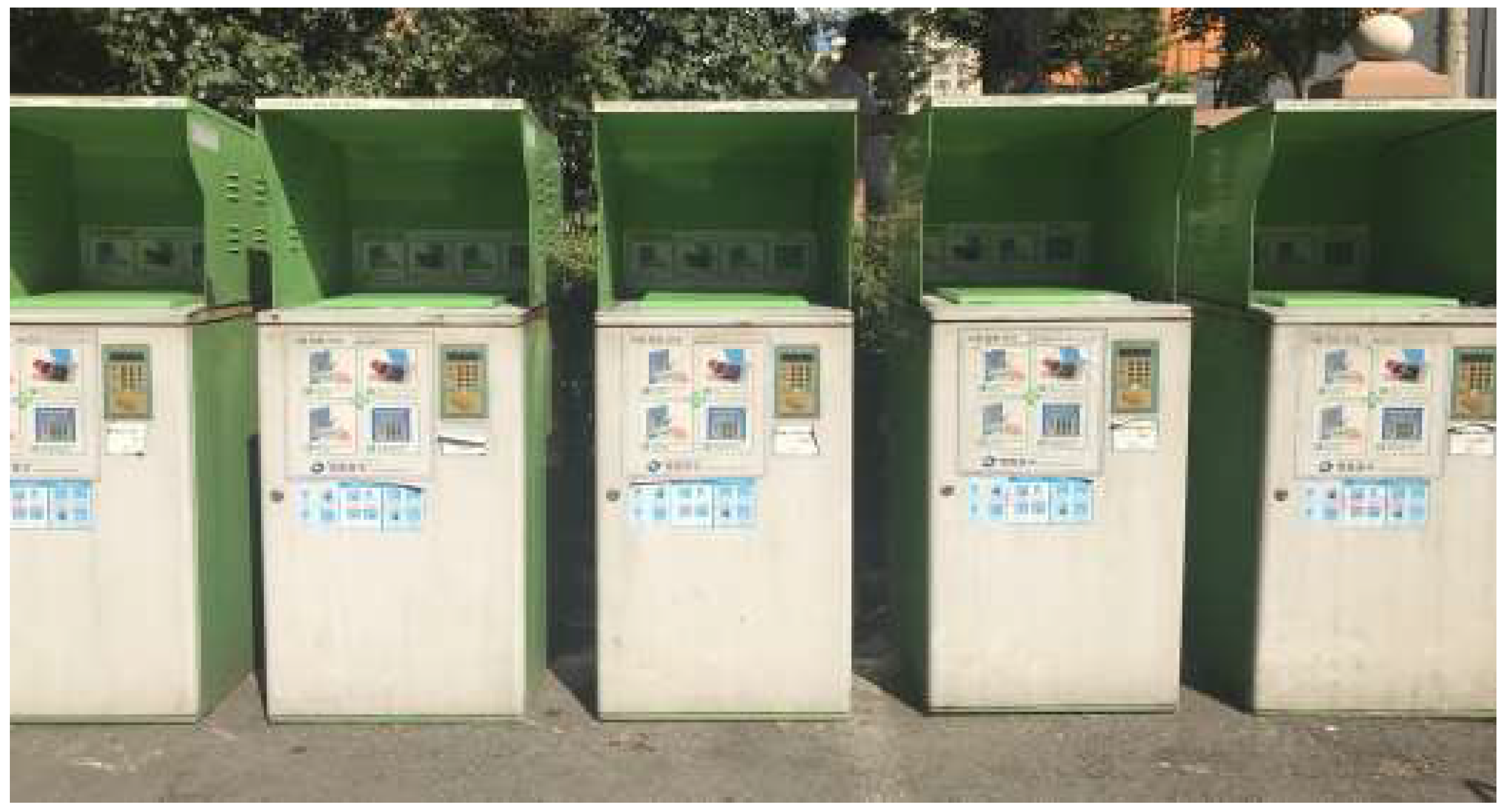
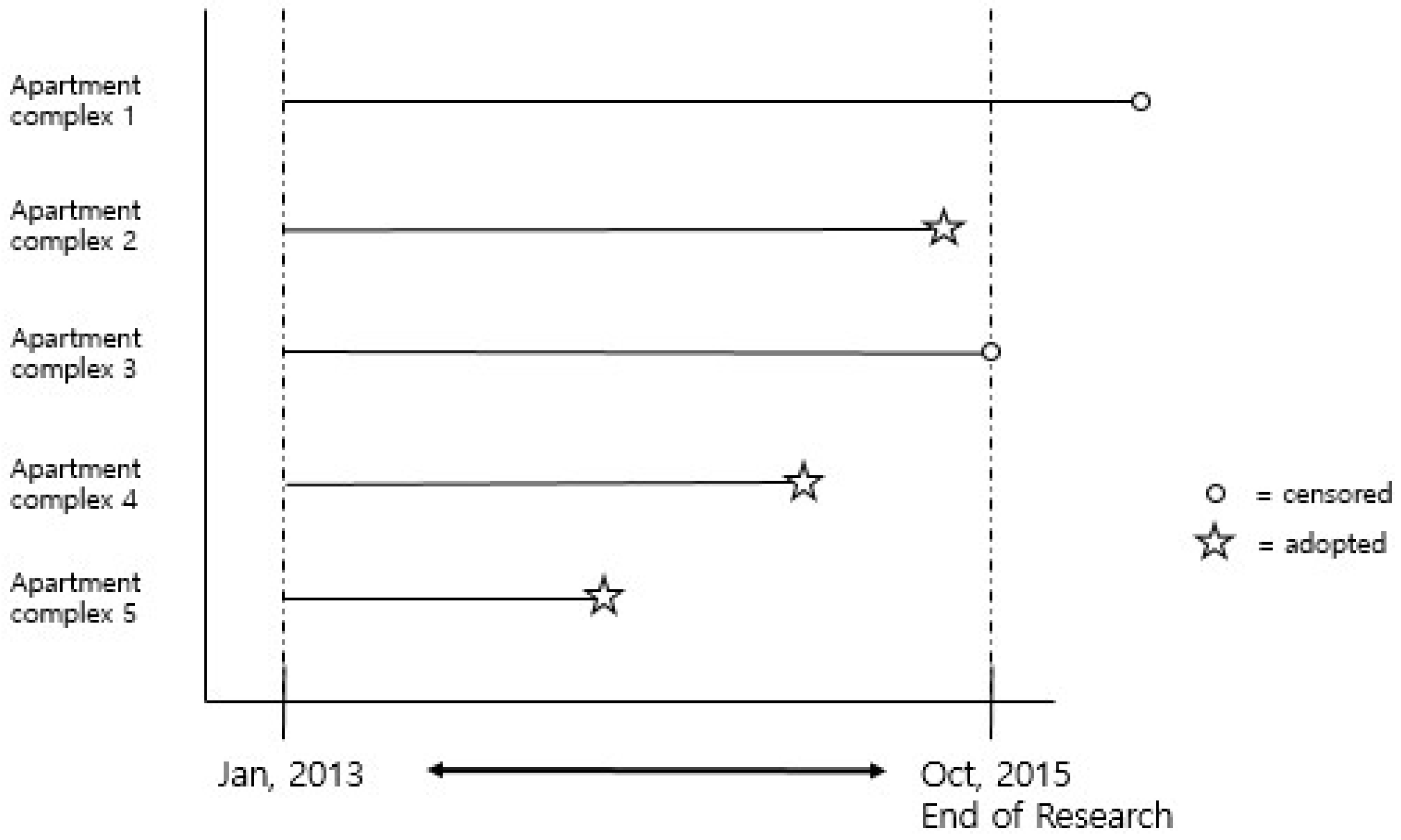

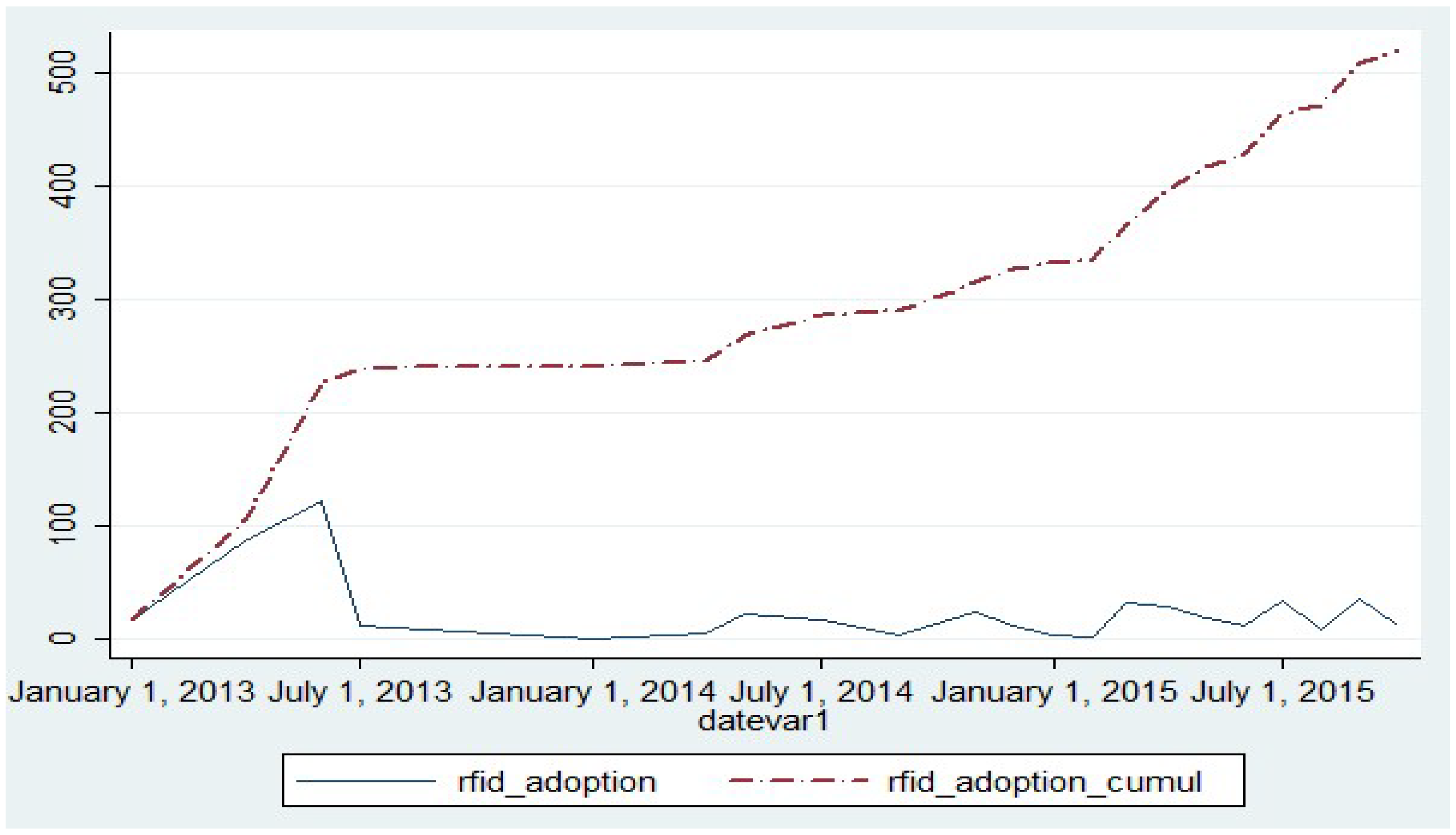
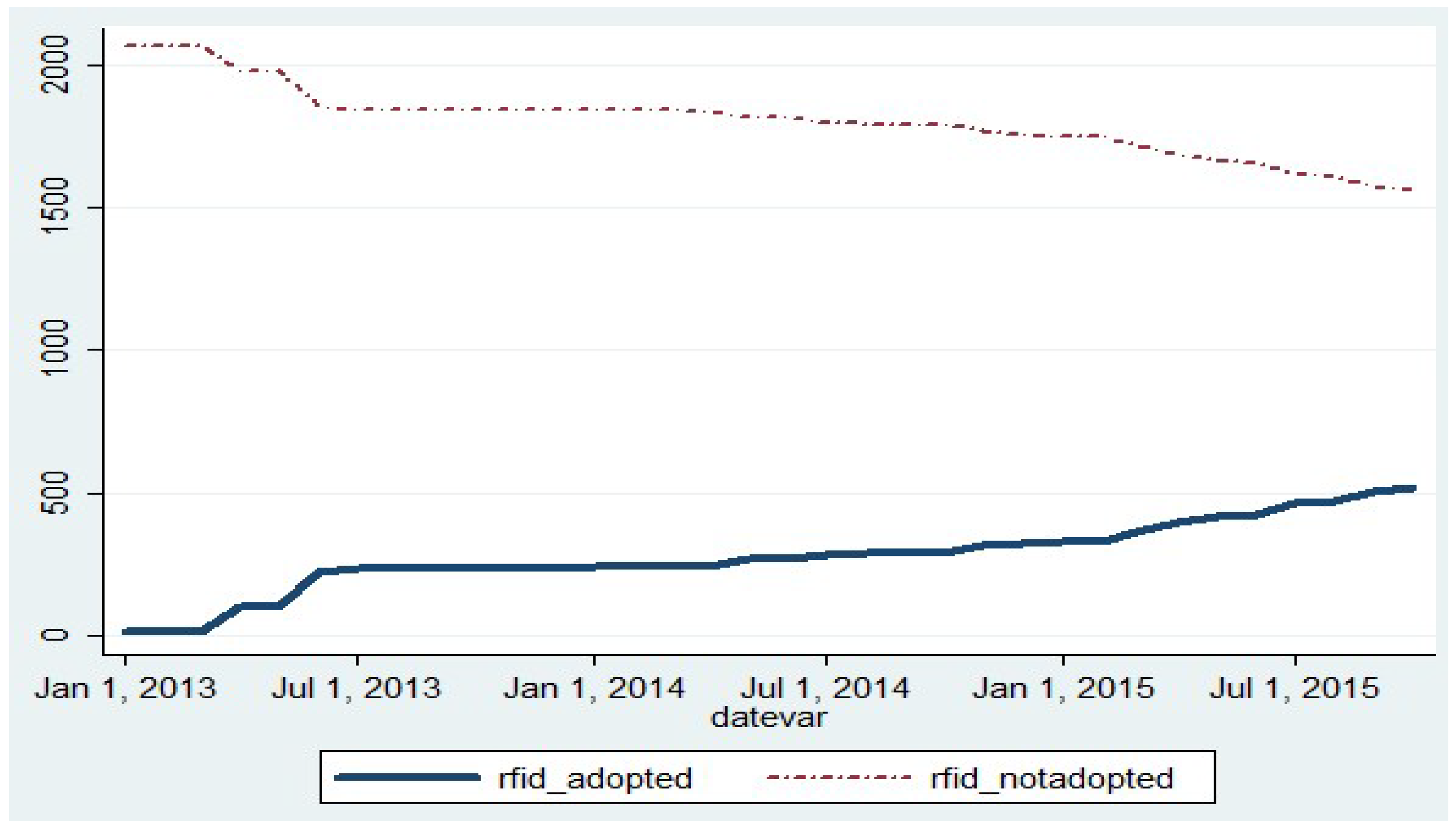
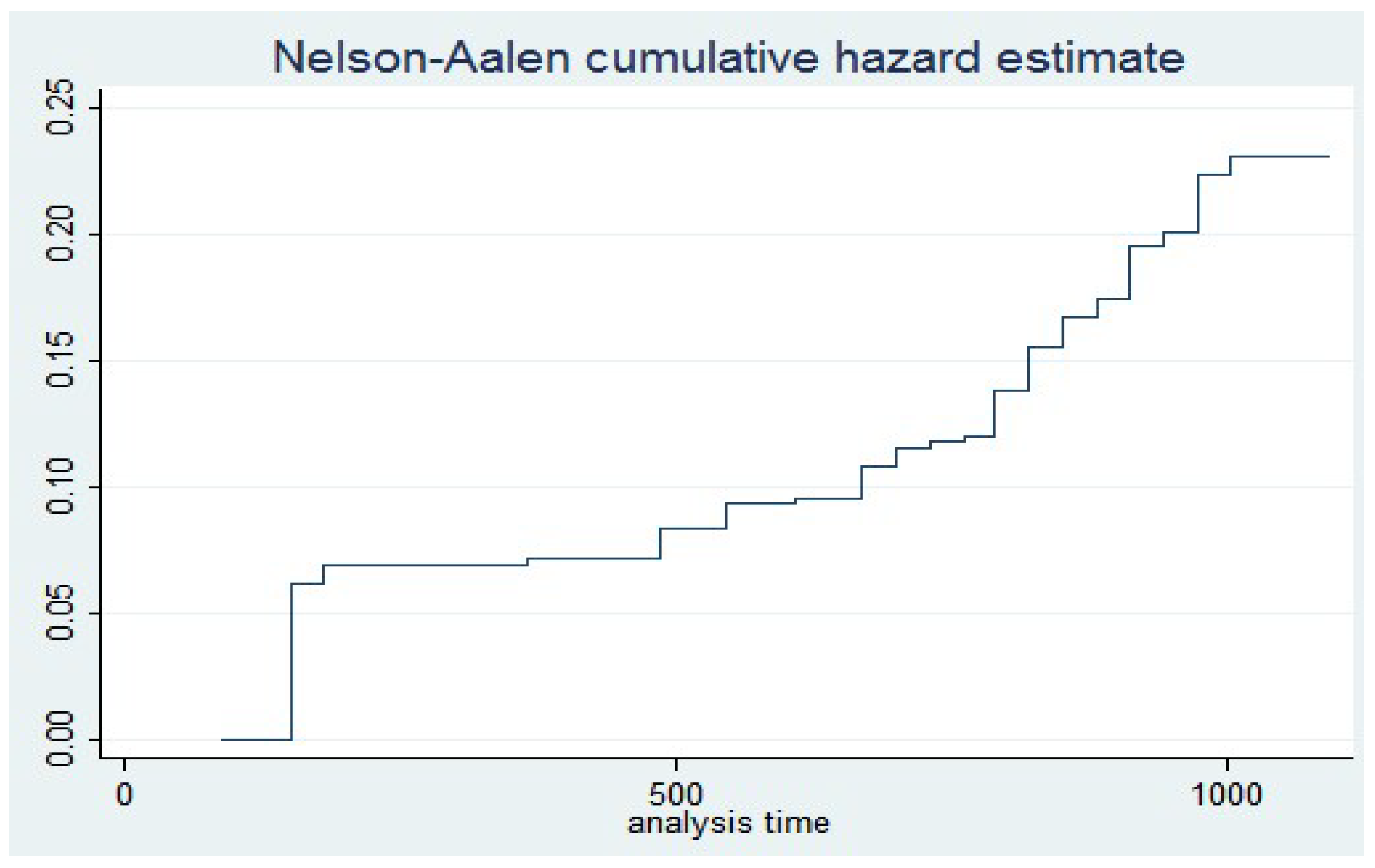
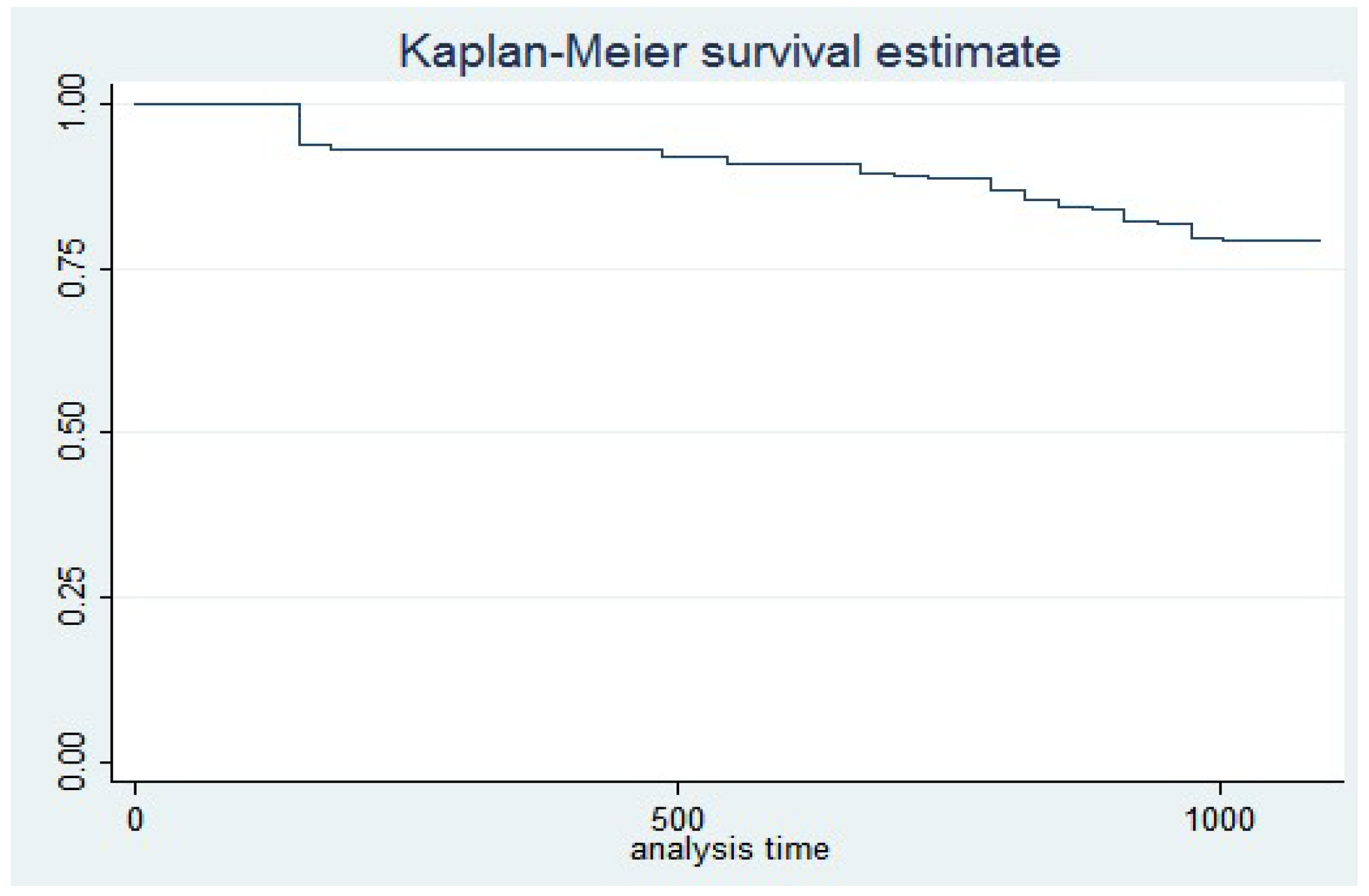
| Year | 2007 | 2008 | 2009 | 2010 | 2011 | 2012 | 2013 | 2014 | 2015 | 2016 |
|---|---|---|---|---|---|---|---|---|---|---|
| Nation | 12,025 | 12,406 | 12,042 | 11,581 | 11,429 | 11,498 | 11,010 | 11,737 | 13,326 | 13,542 |
| Change | - | 3.17% | −2.93% | −3.83% | −1.31% | 0.60% | −4.24% | 6.60% | 13.54% | 1.62% |
| Seoul | 2833 | 2980 | 2907 | 2890 | 2764 | 2837 | 2609 | 2797 | 2967 | 2881 |
| Change | - | 5.19% | −2.45% | −0.58% | −4.36% | 2.64% | −8.04% | 7.21% | 6.08% | −2.90% |
| Type | RFID Weight Method | Chip (Container) | Garbage Bag |
|---|---|---|---|
| Recognition of individual discarder | Electronic card | Not applicable | Not applicable |
| Measuring unit | Weight | Volume size | Volume size |
| Imposition of fees | By household | By household or apartment complex | By household |
| Payment of fees | Deferred payment | Prepaid payment | Prepaid payment |
| Containers | RFID weighing system | A standard container with identification chip | Standard bags (1,2,3,5,10, and 20 ℓ) |
| Housing | Container | District of Seoul (“Gu“) | |
|---|---|---|---|
| Single dwelling unit (detached housing) | Before 2013 | Bags | Dobong, Dongdaemun, Dongjak, Eunpyeong, Gangbuk, Gangdong, Geumcheon, Guro, Gwanak, Gwangjin, Jongno, Jungu, Jungnang, Mapo, Seodaemun, Seongbuk, Seongdong, and Yongsan |
| After 2013 | Bags | Gangnam, Gangseo, Seocho, Yangcheon, and Yeongdeungpo | |
| Food waste containers | Nowon and Songpa | ||
| Multi-family housing (after 2013) | Household | Bags | Gangnam, Gangseo, Jongno, Seocho, Yangcheon |
| RFID container (whole area) | Geumcheon, and Yeongdeungpo | ||
| RFID container (partial area) | Gangseo, Songpa, and Yongsan | ||
| Complex | RFID truck system) | Dobong, Guro, and Mapo | |
| Containers (chips and stickers) | Dongdaemun, Dongjak, Eunpyeong, Gangbuk, Gangdong, Gwanak, Gwangjin, Jongno, Jungu, Jungnang, Nowon, Seodaemun, Seongbuk, Seongdong, and Yongsan |
| Diffusion process | Pilot Project1 | Pilot Project2 | 2015 | 2016 | 2017 | Total |
|---|---|---|---|---|---|---|
| (2010–2011) | (2012–2014) | |||||
| Local government | 18 | 85 | 16 | 10 | 8 | 137 |
| Households (thousands) | 170 | 1940 | 470 | 520 | 1450 | 3550 |
| RFID-food waste equipment | 2307 | 32,618 | 10,160 | 11,071 | 10,545 | 66,701 |
| Factor | Dimension | Questionnaire | Study |
|---|---|---|---|
| Technology factors | Technological readiness | Are you familiar with RFID technology? | Lin and Ho [29], |
| Do you have enough information about RFID technology? | |||
| Technology compatibility | Is the RFID technology compatible with your current system? | Ramamurthy et al. [30], Grandon and Pearson [31], and Venkatesh and Davis [32] | |
| Is RFID technology practical for your field? | |||
| Is RFID technology compatible with the current vision, virtue, and strategy of your organization? | |||
| Cost | Is the operation expensive? | Wymer and Regan [33], and Iacovou et al. [34] | |
| Is education and training expensive? | |||
| Is the cost of maintaining the technology high? | |||
| Organization factors | Top manager support | Is there enough support from the top managers? | Caldeira and Ward [35] |
| Do you think the top managers consider RFID adoption as an important issue? | |||
| Size of the organization | Do you think your organization is large enough to adopt RFID? | Lee et al. [36] | |
| Internal readiness | Is there solid internal readiness for RFID adoption? | Kinsella [22] | |
| Financial readiness | Is the financial readiness of your organization very high? | Dosi [37], and Iacovou et al. [34] | |
| External factors | External pressure | Are most similar organizations adopting RFID technology? | Wymer and Regan [33] |
| Are competitors applying RFID success models? | |||
| Government support | Does the government provide incentives for RFID adoption? | Xu et al. [38], Lee [39], McKnight et al. [40], and Gefen et al. [41] | |
| Does the government provide enough information about RFID? | |||
| Do you think the current level of government support is enough? |
| Literature review | ▷ Review relevant literature in innovation adoption and revised TOE model |
| Research frame | ▷ Exploring relevant factors of community governance and government role ▷ Introducing TCG model (technology, community governance, and government) |
| Research method | ▷ Using interviews from the management office of apartment complexes and local government officials ▷ Using community level variables from the Ministry of Environment |
| Empirical analysis | ▷ OLS and survival analyses |
| Variable | Name | Description | Definition | Source |
|---|---|---|---|---|
| Dependent variable | RFID adoption | Whether RFID was adopted in the apartment complex as of 1 October 2015 | Adopted = 1, Not adopted = 0 | Seoul City government |
| Survive_length | Time taken to adopt RFID technology (unit: day) | Numerical | ||
| Independent variable | Charge_difference | Difference between RFID waste fee and the waste fee of the former method | Numerical | Gu government |
| Heating_individual | Method of heating | Individual heating = 1 Central heating = 0 | k-apt system (central government) | |
| N_household | Number of households in each apartment complex | Numerical | Gu government | |
| Apt_price | Apartment price | Numerical | Korean Appraisal Board | |
| Committee | Existence of community-led management committee | Committee exist = 1, not exist = 0 | k-apt system (Ministry of Land, Infrastructure and Transport)) | |
| Manager | Number of managers working in the apartment complex management office | Numerical | ||
| Gov_info | Total number of bulletin board messages about RFID method uploaded to the Gu government webpage as of 1 October 2015 | Numerical | Gu government |
| RFID | Frequency | Percent | Cumulative |
|---|---|---|---|
| Not adopted | 1561 | 75.01 | 75.01 |
| Adopted | 520 | 24.99 | 100 |
| Total | 2081 | 100 |
| Variables | Sample Size | Mean | Standard Deviation | Minimum | Maximum |
|---|---|---|---|---|---|
| Charge_difference | 2081 | 40.44 | 8.08 | 19 | 68 |
| N_household | 2081 | 618.23 | 651.57 | 40 | 6864 |
| Apt_price | 1698 | 1851.30 | 12,133.18 | 248 | 14,200 |
| Gov_info | 2081 | 27.77 | 29.16 | 0 | 126 |
| Manager | 2081 | 15.88 | 116.92 | 0 | 2944 |
| Variables | Category | Frequency | Percent |
|---|---|---|---|
| Heating_individual | Individual heating | 1374 | 66.03 |
| Central heating | 707 | 33.97 | |
| Committee | Committee | 277 | 13.31 |
| Commission management | 1804 | 86.69 |
| Independent Variables | Model 1: Logit Analysis | Model 2: Pooled OLS |
|---|---|---|
| Odds Ratio | Coefficient | |
| Charge_difference | 1.069 (0.009) | 0.010 (0.001) |
| Heating_individual | 0.981 (0.154) | 0.029 (0.022) |
| N_household | 1.000 *** (0.0001) | 0.0001 (0.0001) |
| Apt_price | 0.997 *** (0.0004) | −3.56 × 10−7 (8.15 × 10−7) |
| Committee | 1.235 *** (0.230) | 0.008 (0.028) |
| Manager | 0.999 (0.0005) | −0.0004 (0.0007) |
| Gov_info | 1.036 *** (0.002) | 0.006 (0.0003) |
| Intercept | 0.036 *** (0.169) | −0.350 *** (0.054) |
| Variable | Model 1: Exponential Distribution Model | Model 2: Weibull Distribution Model | Model 3: Cox Proportional Hazard Model |
|---|---|---|---|
| Hazard Ratio | Hazard Ratio | Hazard Ratio | |
| Charge_difference | 1.604 *** (0.009) | 1.604 *** (0.009) | 1.064 *** (0.009) |
| Heating_individual | 1.113 (0.144) | 1.124 (0.145) | 1.124 (0.145) |
| N_household | 1.000 *** (0.0001) | 1.000 *** (0.0001) | 1.000 *** (0.0001) |
| Apt_price | 0.998 *** (0.0001) | 0.998 *** (0.0001) | 0.998 *** (0.0001) |
| Manager | 1.000 (0.0001) | 1.000 (0.0001) | 1.000 (0.0001) |
| Committee | 1.460 *** (0.228) | 1.482 *** (0.232) | 1.482 *** (0.232) |
| Gov_info | 1.031 *** (0.002) | 1.032 *** (0.002) | 1.032 *** (0.002) |
| Intercept | 0.0001 (0.0001) | 0.0001 (0.0002) | 0.0001 (0.0001) |
| Number of observation | 1683 | 1683 | 1683 |
| Log Likelihood | −938.47 | −922 | −2292.13 |
| LR Chi_squared | 432.54 | 455.99 | 469.27 |
© 2018 by the authors. Licensee MDPI, Basel, Switzerland. This article is an open access article distributed under the terms and conditions of the Creative Commons Attribution (CC BY) license (http://creativecommons.org/licenses/by/4.0/).
Share and Cite
Lee, S.; Jung, K. The Role of Community-led Governance in Innovation Diffusion: The Case of RFID Waste Pricing System in the Republic of Korea. Sustainability 2018, 10, 3125. https://doi.org/10.3390/su10093125
Lee S, Jung K. The Role of Community-led Governance in Innovation Diffusion: The Case of RFID Waste Pricing System in the Republic of Korea. Sustainability. 2018; 10(9):3125. https://doi.org/10.3390/su10093125
Chicago/Turabian StyleLee, Sabinne, and Kwangho Jung. 2018. "The Role of Community-led Governance in Innovation Diffusion: The Case of RFID Waste Pricing System in the Republic of Korea" Sustainability 10, no. 9: 3125. https://doi.org/10.3390/su10093125
APA StyleLee, S., & Jung, K. (2018). The Role of Community-led Governance in Innovation Diffusion: The Case of RFID Waste Pricing System in the Republic of Korea. Sustainability, 10(9), 3125. https://doi.org/10.3390/su10093125






